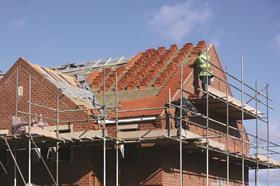Commercial was the weakest performing sector in November, say buyers

Rising levels of housebuilding helped last month record a moderate rise in overall construction activity, while commercial work saw further falls, according to new figures.
Data compiled by Markit/CIPS UK Construction Purchasing Managers’ Index survey also show that last month saw the highest rise in construction work since June, with the latest survey highlighting what housebuilding firms labelled “resilient demand and a supportive policy backdrop”.
In last month’s Budget the government announced a raft of measures designed to boost housebuilding, including £15.3bn of additional spending, taking the total outlay over the next five years to £44bn.
Ministers also promised a review of planning permission decisions and reforms including strengthening the proposed Housing Delivery Test and minimum densities for urban areas.
But while there was moderately good news from housebuilders, commercial and infrastructure work witnessed a downturn buyers said with the Markit/CIPS survey recording what it called “sustained reductions in commercial building and civil engineering, with the latter now experiencing its longest period of decline since the first half of 2013”.
The index ticked up from 50.8 in October to 53.1 in November to remain above the 50 mark for the second month running. Any score below that figure indicates contraction.
Tim Moore, associate director at IHS Markit, said: “Once again, resilient house building growth helped to offset lower volumes of commercial work and civil engineering activity. The latest drop in civil engineering was linked to a recent lack of tender opportunities for infrastructure-related projects.”
Commercial construction was the weakest performing area of activity in November and civil engineering activity fell for the third successive month, although the survey described the fall as “marginal”.
Mark Robinson, chief executive of Scape Group, welcomed the latest figures and said while growth was currently limited to residential housebuilding, the government’s commitment to ‘big ticket’ infrastructure projects such as the Cambridge-Milton Keynes-Oxford corridor, and £300m for HS2 to accommodate the Northern Powerhouse and the Midlands Engine, would give much needed support while public infrastructure investment “will also help to create the right conditions for private sector investment”.
But Robinson also warned that rising construction costs and the accompanying skills shortage remained “a significant concern”.
“We cannot afford the capacity squeeze that could arise if there are not enough skilled people to deliver essential infrastructure,” he added.




























No comments yet